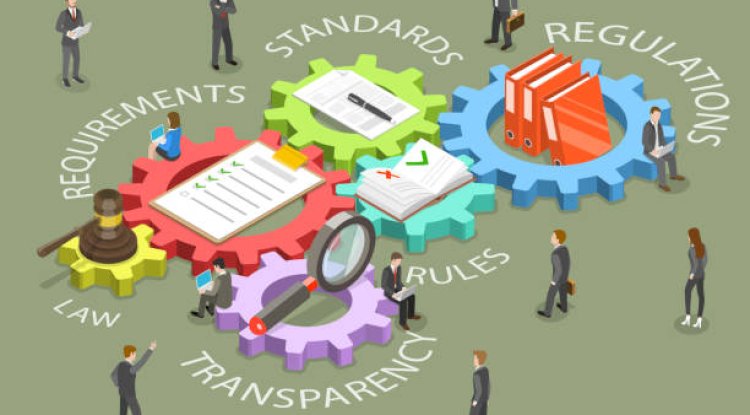Top Features to Look for in a Time Attendance System
We’ll also tackle common questions, discuss future trends, and wrap up with a helpful summary. By the end, you’ll feel more confident about selecting a time attendance system that’s reliable, accurate, and ready to handle a variety of Australian workplace regulations.

Have you ever wondered if you’re accurately tracking working hours across multiple sites in Australia? Or worried that you might be missing important compliance details when rostering your staff? These concerns often creep in when managing a large or growing workforce. Keeping track of attendance, logging times correctly, and staying within legal guidelines can become overwhelming in no time at all.
Time and attendance systems are designed to remove those pain points. They record when employees log in, log out, and everything in between, all while helping you maintain accountability, accuracy, and transparency. In other words, they ensure you can focus on your core business without fretting over the nitty-gritty details of time tracking.
Throughout this blog post, we’ll explore why “time and attendance system requirements” really matter, the top features to watch out for when choosing a system, and how to make the best choice for your business needs. We’ll also tackle common questions, discuss future trends, and wrap up with a helpful summary. By the end, you’ll feel more confident about selecting a time attendance system that’s reliable, accurate, and ready to handle a variety of Australian workplace regulations.
Why “Time and Attendance System Requirements” Matter
If you’re running a business in Australia, you already know labour costs can be one of your biggest expenses. Paying staff on time is crucial, but so is making sure you’re not overpaying or underpaying. That alone underscores why “time and attendance system requirements” hold so much weight: without the right structure in place, your payroll could suffer costly errors or compliance pitfalls.
The idea behind these requirements is quite straightforward: you need a systematic way to track who’s working, for how long, and at what rate. This ensures a smooth process when it comes to paying staff, managing leave, and staying on top of mandatory employee entitlements. It also fosters transparency—employees can see their hours in real time, and managers can spot inefficiencies before they balloon into bigger issues.
Beyond payroll precision, time and attendance systems also help validate attendance patterns and reduce instances of “buddy punching” or discrepancies in manual timecards. In short, they help you keep a firm hand on your labour costs while boosting your team’s overall productivity.
Addressing Key Pain Points: Accuracy, Accountability, and Efficiency
If attendance data isn’t accurate, you’ll soon run into trouble. Manual systems often rely on people remembering to clock in or out, which can affect accuracy if someone forgets. That’s where a robust digital system comes in. It guarantees that data is captured at the precise moment someone starts or finishes work, leaving little room for slip-ups or intentional time theft.

Accountability comes into play when your workforce knows their hours are tracked in a transparent manner. There’s less temptation for employees to game the system, and managers have concrete proof of who worked when. Clear records also help resolve any disputes that might arise—for instance, when an employee and a manager disagree over exact clock-in times.
Efficiency is the third key pillar that’s often overlooked. When you rely on an automated system, you free up valuable hours previously spent cross-referencing timesheets and dealing with manual data entry. This not only saves time but also reduces the likelihood of human error. Instead of scrambling with spreadsheets, your HR team can focus on more pressing tasks, such as training or employee engagement.
Top Features to Fulfil “Time and Attendance System Requirements”
Choosing a system that meets your “time and attendance system requirements” can feel like a major project. To help you focus on what really counts, here are the top features worth paying attention to.
Biometric Recognition & Security
Biometric attendance uses unique markers—like fingerprints or facial recognition—to confirm an employee’s identity. These systems remove the risk of people clocking in on someone else’s behalf. Plus, they add an extra layer of security, ensuring only authorised personnel can access or alter attendance details.
Cloud-Based vs. On-Premise Systems
Opting for a cloud-based system usually means quick updates, easier maintenance, and the ability to access data from anywhere with an internet connection. On-premise solutions, on the other hand, give you greater control over your infrastructure and data storage. Your choice depends on your company size, data policies, and budget. Cloud-based systems are fast becoming the standard thanks to their convenience and lower upfront costs.
Integration with Payroll and HR Software
If your chosen platform seamlessly links into payroll and HR systems, you’ll cut down on double-entry and reduce the chance of errors. Integration also ensures that changes to staff details—like new joiners, role updates, or pay rates—are shared across platforms automatically. This kind of centralisation helps keep everything consistent and up-to-date.
Automated Scheduling & Rostering
Building rosters can be a headache, especially if you’re juggling multiple locations or shift patterns. Automated scheduling tools suggest optimal staffing levels based on historic data. They also help you stay within legal limits by preventing employees from working excessive hours. This keeps everyone safe, compliant, and well-balanced.
Compliance with Australian Workplace Regulations
Australian laws can be strict when it comes to overtime, breaks, and other employee entitlements. Make sure your system aligns with Fair Work requirements and adjusts to changes in legislation. This is absolutely key for avoiding penalties. A good time attendance system should let you set rules that automatically alert you if someone’s hours exceed legal limits.
Real-Time Monitoring & Alerts
Real-time visibility allows supervisors to see who’s clocked in right at that moment, helping them spot any shortages or need for backup staff. Alerts can be set up for lateness, missed clock-outs, or if someone works beyond scheduled hours. This proactive approach keeps everything running smoothly and helps you respond quickly to any unexpected changes.
Detailed Reporting & Analytics
Advanced reporting capabilities turn raw time sheet data into actionable insights. Maybe you want to see which shifts are regularly overstaffed to cut unnecessary costs. Or perhaps you want to identify staff who might be close to overtime limits. Detailed analytics can help you make smarter decisions for the future. Ultimately, a system that offers custom reports and dashboards will provide a clearer picture of what’s happening across your entire operation.
Mobile Access & Self-Service
Many modern time attendance systems come with mobile apps that let staff clock in through their phones if they’re working offsite. Managers can also approve leave requests, respond to shift swaps, or check real-time attendance while on the go. This level of flexibility empowers both managers and staff to take charge of their schedules without being chained to a desk.
Making an Informed Choice
So, how do you whittle down your options and pick the best system for your business? Focus on price, flexibility, and ease of use. Then, weigh up how each solution aligns with both your immediate and long-term needs. Below are three critical aspects to keep in mind.
Comparing Vendors and Pricing
Finding the right vendor can be like dating: you’ll want to make sure you’re a good match before committing. Look for transparent pricing models, and be wary of hidden costs for add-ons or upgrades. Consider the size of your workforce and how quickly it’s likely to expand. Will you be charged by the user, or does the system come with a flat rate? Also, check if the provider charges extra for support, setup, or training—all of which factor into your total investment.
Customisation Options to Meet Your Business Needs
Every company is different. A small café with five employees might need a simple clock-in system, whereas a large retailer with dozens of outlets will need far more complex scheduling tools. The ideal platform should let you tweak settings, integrate with your preferred payroll service, and offer different permissions for different roles within your team. If the system is too rigid, you could find yourself grappling with workarounds or data silos.
Implementation and Employee Training
Even the most cutting-edge platform won’t help if your team struggles to use it. Find out what kind of support is included in the onboarding process, whether that’s virtual demos, training manuals, or in-person sessions. Smooth implementation is a must for quick adoption. You don’t want to be spending months ironing out kinks or fielding constant technical questions. A vendor with a stellar track record of fast, successful implementations can save you a lot of time and hassle in the long run.
Artificial Intelligence and Predictive Analytics
AI-driven tools can forecast labour requirements based on factors like historical attendance, sales volume, and even seasonal trends. Predictive analytics will soon be able to suggest staffing rosters automatically, reducing guesswork and helping managers plan more accurately. These features could also flag potential problems early, like staff who might be hitting overtime levels or departments where absenteeism is on the rise.
Expanding Mobile and Cloud Capabilities
More companies are looking for solutions that can be set up and accessed from anywhere. This is especially relevant if your workforce is constantly on the move, working on job sites or visiting clients. Expect further integration with mobile apps that allow staff to clock in using GPS and facial recognition, eliminating the need for physical terminals or paper timesheets. Cloud-based updates also make it much simpler to apply software patches instantly.
Evolving Compliance Standards in Australia
Labour laws in Australia are always changing. We may see new rules around overtime, penalty rates, or record-keeping that require time attendance systems to be even more advanced in the future. Systems with auto-updates will help businesses remain compliant, and robust algorithms will be developed to interpret fresh regulations as soon as they’re introduced. Ensuring you have a system that can adapt to these developments is crucial for peace of mind.
Conclusion
Summing up, laying down clear “time and attendance system requirements” is vital for any Australian business looking to manage labour costs, improve productivity, and limit compliance risks. A modern solution that covers everything—from reliable tracking and biometric security to automatic compliance checks—ensures your workforce remains motivated and accountable. Plus, it gives you better visibility into where those precious staff hours are going each day.
You’ve discovered how features like real-time alerts, robust integrations, and automated scheduling can help your business smooth out common inefficiencies. You’ve also learned how important it is to choose a system that matches your workforce size, industry needs, and compliance obligations. At the same time, supporting your team through the transition relies on effective training and ongoing support.
Ultimately, time and attendance systems aren’t just about clocking in and out. They’re about strategic workforce management and empowering everyone with accurate, transparent data. Now that you know what matters most, you’re well-placed to take the next step. Whether you’re upgrading an existing system or starting from scratch, prioritising these core features will help you find a solution that stands the test of time—and boosts your business along the way.
Share
What's Your Reaction?
 Like
0
Like
0
 Dislike
2
Dislike
2
 Love
0
Love
0
 Funny
1
Funny
1
 Angry
1
Angry
1
 Sad
1
Sad
1
 Wow
1
Wow
1



















1
1